Base de Datos de las Especies de Galápagos
La Base de Datos de las Especies de Galápagos comparte la información de las especies de nuestras Colecciones de Historia Natural.
Geospiza scandens
Pinzón Cactero Común (, Pinzón de cactus común, Common Cactus Finch
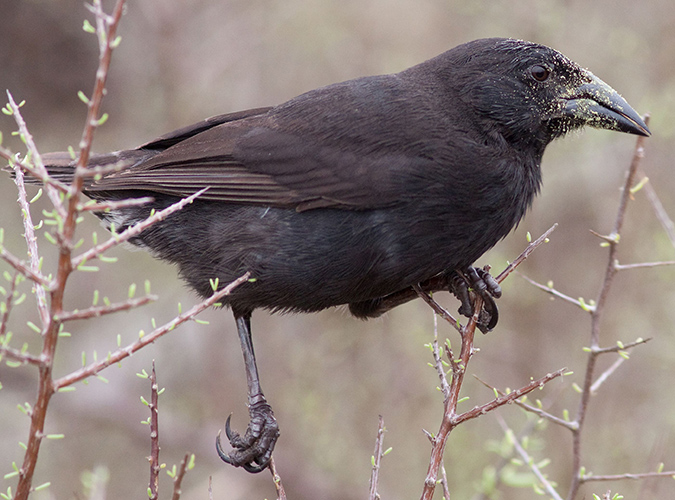
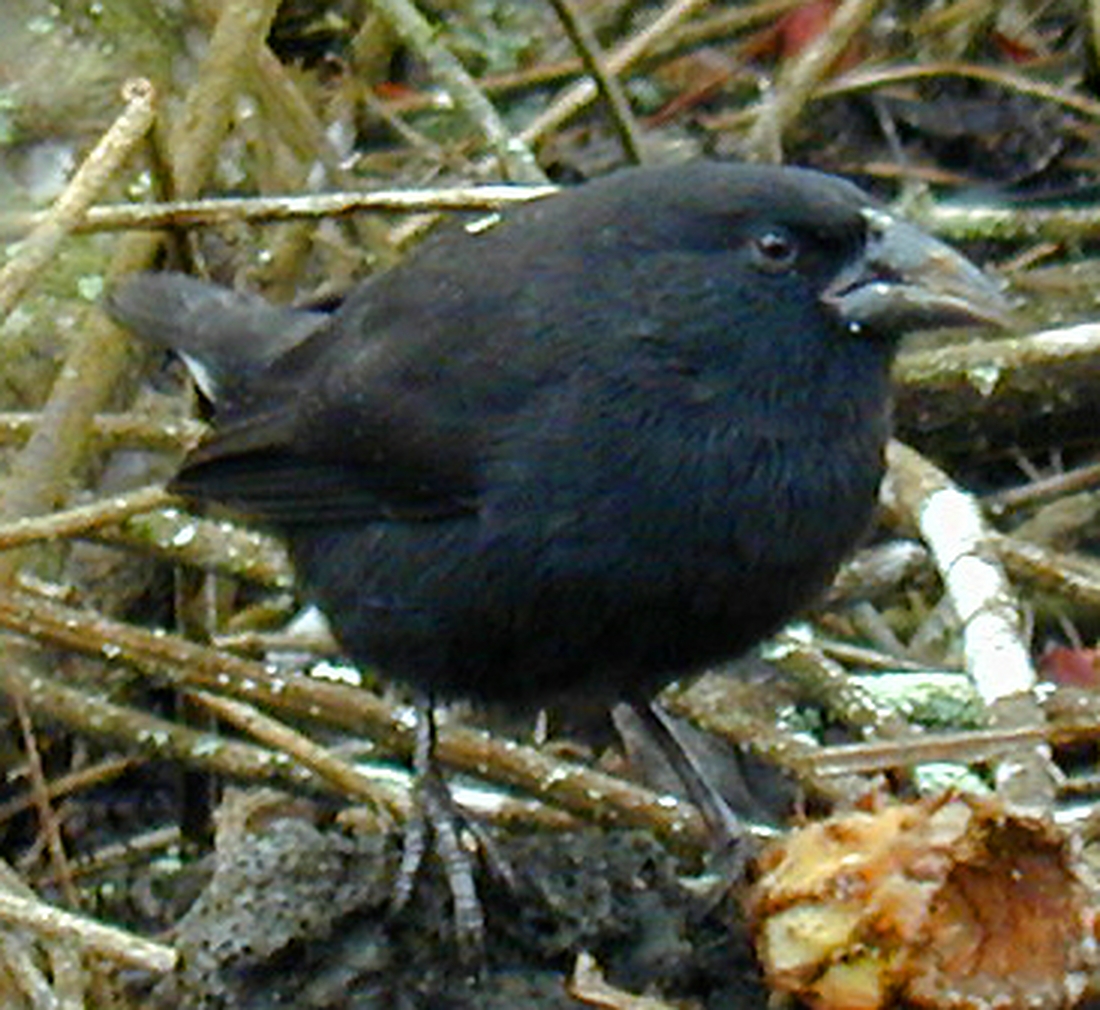
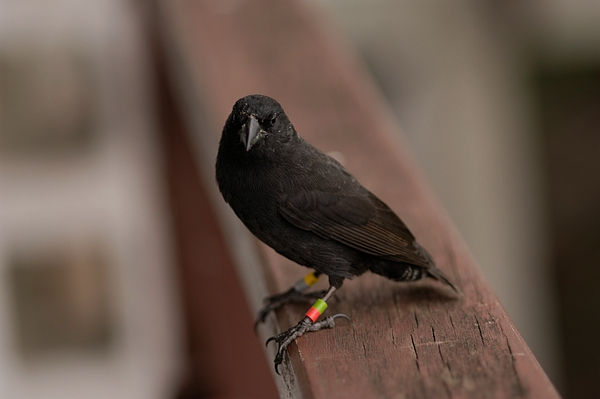
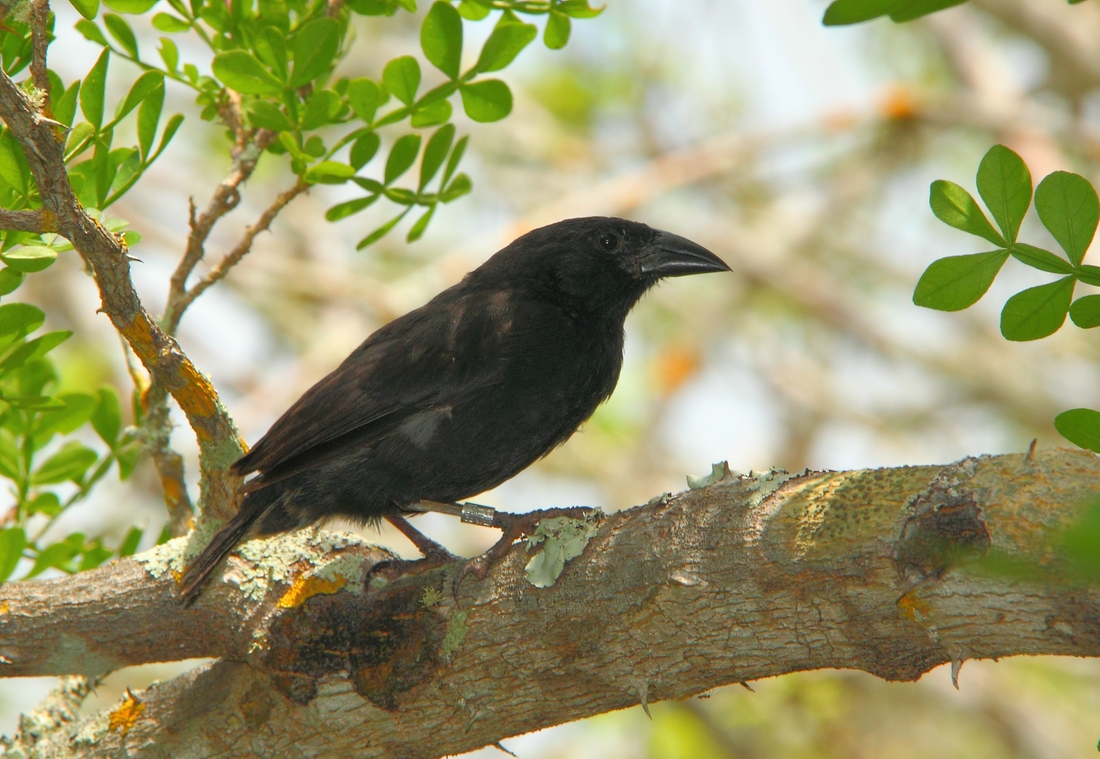
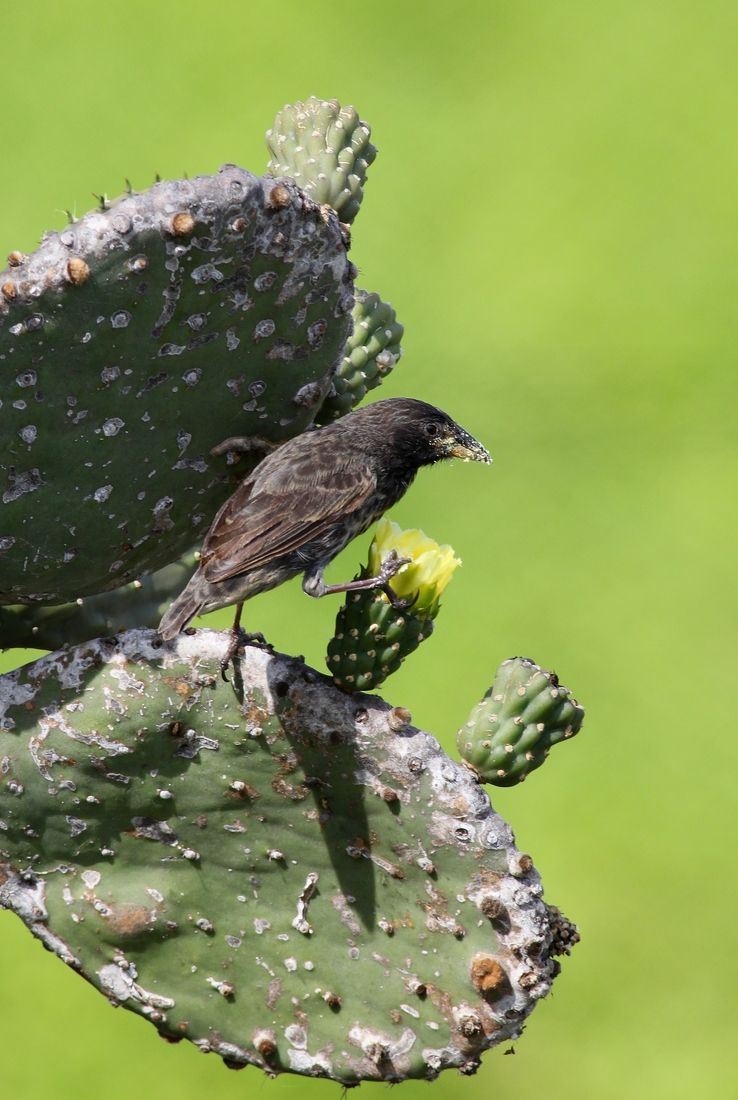
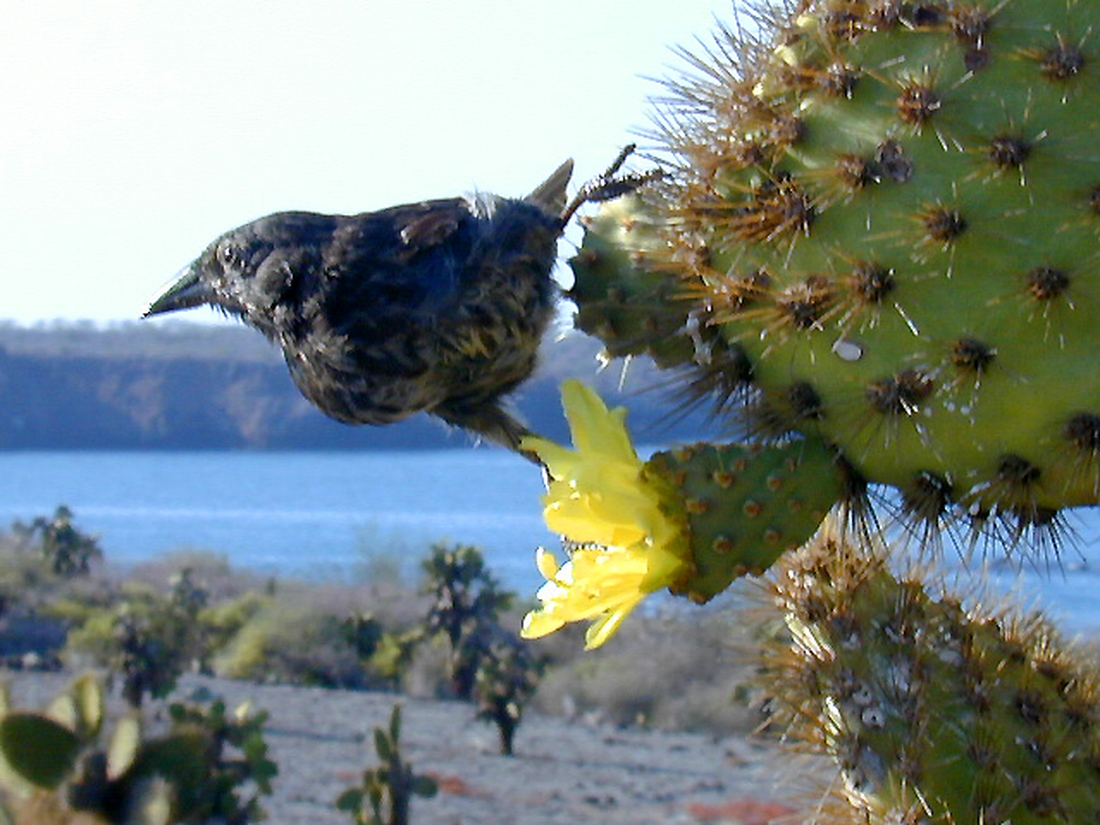

Amenazas La especie esta progresivamente siendo más afectada por viruela aviar, aunque no existe una evaluación sobre su impacto real en las poblaciónes. Es también afectada por la mosca parásita Philornis downsi, pero existe muy poca información disponible al respecto. Infomación adicional Venegas, L.
Dominio
Eukaryota
Reino
Animalia
Filo
Chordata
Clase
Aves
Orden
Passeriformes
Familia
Thraupidae
Género
Geospiza
Especie
scandens
Categoría de taxón: Aceptado
Syn.: Geospiza scandens abingdoni (P. L. Sclater & Salvin, 1870); Geospiza scandens intermedia Ridgway, 1894; Geospiza scandens rothschildi Heller & Snodgrass, 1901; Geospiza scandens scandens (Gould, 1837); Cactornis scandens Gould, 1837; Cactornis assimilis Gould, 1837; Cactornis abingdoni (Sclater & Salvin, 1870).
Origen: Endémica
Preferencia de zona de altitúd en Galápagos: Zona costera - zona seca
Preferencias de habitat: Prefiere formaciones secas de árboles o arbustos que mantengan buenas poblaciones de cactus Opuntia.
Preferencias de alimentación: Especie especializada en alimentarse de Opuntias, de la cual come sus flores, néctar, polen, semillas, además de insectos y larvas que recoge de cladodios en descomposición. Se alimenta también de algunas otras semillas.
Papel trófico: Omnívoro
Modalidad de reproducción: Exclusivamente sexual
Biología reproductiva: El macho se exhibe en frente de un nido con forma de domo, construido entre cladodios de Opuntia. Solo las hembras incuban de 3 a 5 huevos pero ambos alimentan los pichones. La reproducción empieza antes de los otros pinzones, peculiarmente antes de empezar la época lluviosa.
Mapa de ocurrencias de colección o registros de observación para esta especie en nuestra base de datos de colecciones.
Distribución: Se encuentra en las islas grandes excepto Fernandina, Pinzón.
- Alatalo, R. V. (1982) Bird Species Distributions in the Galapagos, Ecuador, and Other Archipelagoes: Competition Or Chance?. Ecology 63 (4): 881-887
- Bisconti, M. Landini, W., Bianucci, G., Cantalamessa, G., Carnevale, G. Ragaini, L. & Valleri, G. (2001) Biogeographic relationships of the Galapagos terrestrial biota: parsimony analyses of endemicity based on reptiles, land birds and Scalesia land plants. J. Biogeogr. 28: 495-510.
- Boag, P.T. (1984) Growth and allometry of external morphology in Darwin's finches (Geospiza) on Isla Daphne Major, Galápagos. Journal of Zoology 204:413-441.
- Castro, I. Phillips, A. (1996) A Guide to the Birds of the Galapagos Islands. Christopher Helm Publishers Ltd., London.
- Donohue, K. (2011) Darwin's Finches: Readings in the Evolution of a Scientific Paradigm University of Chicago Press, Chicago, 492 pp.
- Dvorak, M. Fessl, B., Nemeth, E., Kleindorfer, S.M., & Tebbich, S. (2012) Distribution and abundance of Darwin ́s Finches and other land birds on Santa Cruz Island Galapagos: evidence for declining populations. Oryx 46:78-86
- Dvorak, M. Nemeth, E., Wendelin, B., Herrera, P., Mosquera, D., Anchundia, D., Sevilla, C., Tebbich, S. and Fessl, B. (2017) Conservation status of landbirds on Floreana: the smallest inhabited Galápagos Island. Journal of Field Ornithology 88(2): 132-145. Doi: 10.1111/jofo.12197.
- Dvorak, M. Fessl, B., Nemeth, E. Anchundia, D., Cotin, J., Schulze, C. H., Tapia, W., & Wendelin, B. (2020) Survival and extinction of breeding landbirds on San Cristóbal, a highly degraded island in the Galápagos. Bird Conservation International 30(3): 381-395. doi.org/10.1017/S0959270919000285
- Dvorak, M. Nemeth, E., Wendelin, B. & Fessl, B. (2021) More extinctions on the Galápagos Islands? An unsuccessful search for 4 landbirds on Floreana. Wilson Journal of Ornithology 133, pp. 514-518.
- Farrington, H. Lawson, L., Clark, C. & Petren, K. (2014) The evolutionary history of Darwin's finches: speciation, gene flow, and introgression in a fragmented landscape. Evolution doi 10.1111/evo.12484.
- Fessl, B. Tebbich, S. (2002) Philornis downsi - a recently discovered parasite on the Galápagos archipelago - a threat to Darwin's finches? Ibis 144: 445-451.
- Freile, J.F. Santander, T., Jiménez-Uzcátegui, G., Carrasco, L., Cisneros-Heredia, D., Guevara, E., Sánchez-Nivicela, M., Tinoco, B. (2019) Lista Roja de las aves del Ecuador Quito, Ecuador. 97 pp.
- Gibbs, H. Grant, P. (1987) Adult survivorship in Darwin's Ground Finch (Geospiza) populations in a variable environment. Journal of Animal Ecology 56:797-814.
- Grant, B.R. (2003) Evolution in Darwin’s Finches: a review of a study on Isla Daphne Major in the Galápagos Archipelago. Zoology 106:255-259.
- Grant, B.R. Grant, P.R. (1996) Cultural inheritance of song and its role in the evolution of Darwin's finches. Evolution 50:2471-2487.
- Grant, B.R. Grant, P.R. (2010) Songs of Darwin’s finches diverge when a new species enters the community. Proceedings of the National Academy of Sciences 107:20156–20163.
- Grant, B.R. Grant, P.R. (1981) Exploitation of Opuntia cactus by birds on the Galápagos. Oecologia 49:179-187.
- Grant, B.R. Grant, P.R. (1996) High survival of Darwin's finch hybrids: effects of beak morphology and diets. Ecology 77:500-509.
- Grant, B.R. (1996) Pollen digestion by Darwin's finches and its importance for early breeding. Ecology 77:489-499.
- Grant, P.R. Grant, B.R. (2002) Unpredictable evolution in a 30-year study on Darwin's Finches. Science 296:707-711.
- Grant, P.R. Grant, B., Markert, J., Keller, L. & Petren, K. (2004) Convergent evolution of Darwin's finches caused by introgressive hybridization and selection. Evolution 58:1588-1599.
- Grant, P.R. Grant, B.R., Keller, L., Markert, L. & Petren, K. (2003) Inbreeding and interbreeding in Darwin's finches. Evolution 57:2911-2916
- Grant, P.R. Grant, B.R. (1994) Phenotypic and genetic effects of hybridization in Darwin's finches. Evolution 48:297-316.
- Grant, P.R. Grant, B.R. (1976) Darwin's finches: population variation and natural selection. Proceedings of the National Academy of Sciences of the United States of America 73:257-261.
- Grant, P.R. Grant, B.R. (1997) Mating patterns of Darwin's Finch hybrids determined by song and morphology. Biological Journal of the Linnean Society 60:317-343.
- Grant, P.R. Grant, B.R. (1980) Annual variation in finch numbers, foraging and food supply on Isla Daphne Major, Galápagos. Oecologia 46:55-62.
- Grant, P.R. Grant, B.R. (1997) Hybridization, sexual imprinting, and mate choice. The American Naturalist 149:1-28.
- Grant, P.R. Grant, B.R. (1992) Demography and the genetically effective sizes of two populations of Darwin's Finches. Ecology 73:766-784.
- Grant, P.R. Grant, B.R. (2010) Conspecific versus heterospecific gene exchange between populations of Darwin's finches. Philosophical Transactions of the Royal Society of London. Series B, Biological Sciences 365:1065-1076.
- Grant, P.R. (1993) Hybridization of Darwin's finches on Isla Daphne Major, Galápagos. Philosophical Transactions of the Royal Society of London. Series B, Biological Sciences 340:127-139.
- Grant, P.R. Grant, B.R. (2000) Non-random fitness variation in two populations of Darwin's finches. Proceedings of the Royal Society of London Series B-Biological Sciences 267:131-138.
- Grant, P.R. Grant, B.R. (2011) Causes of lifetime fitness of Darwin’s finches in a fluctuating environment. Proceedings of the National Academy of Sciences 108:674-679.
- Grant, P.R. (1983) Inheritance of size and shape in a population of Darwin's finches, Geospiza conirostris. Proceedings of the Royal Society of London Series B-Biological Sciences 220:219-236.
- Guerrero, A. Tye, A. (2009) Darwin's Finches as seed predators and dispersers. The Wilson Journal Of Ornithology 121 (4):752-764, 2009
- Harris, M.P. (1973) The Galápagos avifauna. Condor 75(3): 265-278.
- Helsen, P. Verdyck, P., Tye, A., Van Dongen, S. (2008) Low levels of genetic differentiation between Opuntia echios varieties on Santa Cruz (Galápagos) Springer-Verlag. 2009
- IUCN (2015) The IUCN Red List of Threatened Species. Version 2015-4. <www.iucnredlist.org>. Downloaded on 20 November 2015.
- IUCN (2017) The IUCN Red List of Threatened Species Version 2016-3. <www.iucnredlist.org>. Downloaded on 03 February 2017.
- Jiménez-Uzcátegui, G. Milstead, B., Márquez, C., Zabala, J., Buitrón, P., Llerena, A., et al. (2007) Galapagos vertebrates: endangered status and conservation actions. Galapagos Report 2006–2007. Charles Darwin Foundation, Puerto Ayora, p. 104–110.
- Jiménez-Uzcátegui, G. Betancourt, F. (2008) Avifauna vs automotores. Informe Galápagos 2007-2008. FCD, PNG & INGALA. Puerto Ayora, Ecuador. p. 111–114.
- Keller, L. Grant, P., Grant, B. & Petren, K. (2002) Environmental conditions affect the magnitude of inbreeding in survival of Darwin's finches. Evolution 56:1229-1239.
- Kleindorfer, S. Dudaniec, R.Y. (2006) Increasing prevalence of avian poxvirus in Darwin’s finches and its effect on male pairing success. Journal of Avian Biology 37: 69-76.
- Lack, D. (1945) The Galapagos Finches (Geospizinae). A Study in Variation. Occasional papers of the California Academy of Sciences 21:1-158.
- Lamichhaney, S. Berglund, J., Sällman Almén, M., Maqbool, K., Grabherr, M., Martinez-Barrio, A., Promerova, M., Rubin, C.J., Wang, C., Zamani, N., Grant, B.R., Grant, P.R., Webster, M.T., Andersson, L. (2015) Evolution of Darwin’s finches and their beaks revealed by genome sequencing Nature 518: 371-386. doi:10.1038/nature14181
- Markert, J. Grant, P., Grant, B., Keller, L., Coombs, J. & Petren, K. (2004) Neutral locus heterozygosity, inbreeding, and survival in Darwin's ground finches (Geospiza fortis and G. scandens). Heredity 92:306-315.
- McMullen, C.K. (1987) Biologia reproductiva de las Angiospermas de las Islas Galapágos. Pg. 39 - 52. Memorias: Taller sobre investigación Botànica y manejo en galapágos.
- Millington, S.J. Price, T. (1985) Song inheritance and mating patterns in Darwins Finches. The Auk 102:342-346.
- Millington, S.J. Grant, P.R. (1983) Feeding ecology and territoriality of the cactus finch, Geospiza scandens in Isla Daphne Major, Galapagos. Oecologia 58:76-83.
- Millington, S.J. Grant, P.B. (1984) The breeding ecology of the cactus finch Geospiza scandens on Isla Daphne Major Galápagos Ecuador. Ardea 72:177-188.
- Petren, K. Grant, P., Grant, B. & Keller, L. (2005) Comparative landscape genetics and the adaptive radiation of Darwin’s finches: the role of peripheral isolation. Molecular Ecology 14:2943-2957.
- Petren, K. Grant, B. & Grant, P. (1999) A phylogeny of Darwin's finches based on microsatellite DNA length variation. Proceedings of the Royal Society of London Series B-Biological Sciences 266:321-329.
- Remsen, J.V. Areta, J.I.Jr., Cadena, C.D., Claramunt, S., Jaramillo, A., Pacheco, J.F., Pérez-Emán, J., Robbins, M.B., Stiles, F.G., Stotz, D.F., Zimmer, K. J. (2016) A Classification of the Bird Species of South America. South American Classification Committee. American Ornithologists' Union http://www.museum.lsu.edu/~Remsen/SACCBaseline.htm
- Salvin, O. (1876) On the avifauna of the Galápagos Archipelago. Transactions of the Zoological Society of London 9: 447-510.
- Schluter, D. (1982) Distributions of Galápagos ground finches along an altitudinal gradient: the importance of food supply. Ecology 63:1504-1517
- Schluter, D. Grant, P. (1984) Ecological correlates of morphological evolution in a Darwins Finch Geospiza difficilis. Evolution 38:856-869.
- Stern, D. Grant, P. (1996) A phylogenetic reanalysis of allozyme variation among populations of Galápagos finches. Zoological Journal of the Linnean Society 118:119-134.
- Sundevall, C.J. (1871) On birds from the Galápagos Islands. Proceedings of the Zoological Society of London 1871: 124-129.
- Swarth, H.S. (1931) The Avifauna of the Galapagos Islands. Occ. Pap. Calif. Acad. Sci. 18: 1-299.
- Thiel, T. Whiteman, N.K., Tirapé, A., Baquero, M. I., Cedeño, V., Walsh, T., Jiménez-Uzcátegui, G. & Parker, P.G. (2005) Characterization of canary pox-like viruses infecting endemic birds in the Galapagos Islands. Journal of Wildlife Diseases 41(2): 342-353.
- Wiedenfeld, D.A. (2006) Aves, the Galapagos Islands, Ecuador. Check List 2006 2(2): 1-27.
- Zylberberg, M. Lee, K., Klasing, K. & Wikelski, M. (2012) Increasing avian pox prevalence varies by species, and with immune function, in Galápagos finches. Biological Conservation 153:72-79.
Se puede descargar y utilizar la información de esta página, reconociendo el origen de los datos.
Esta página debe citarse como sigue:
"Galapagos Species Database, Geospiza scandens", dataZone. Charles Darwin Foundation, https://datazone.darwinfoundation.org/es/checklist/?species=5097. Accessed 24 December 2025.


Tipo de alimentación: Polifago
Flor y néctar de Opuntia, polen, semillas, insectos